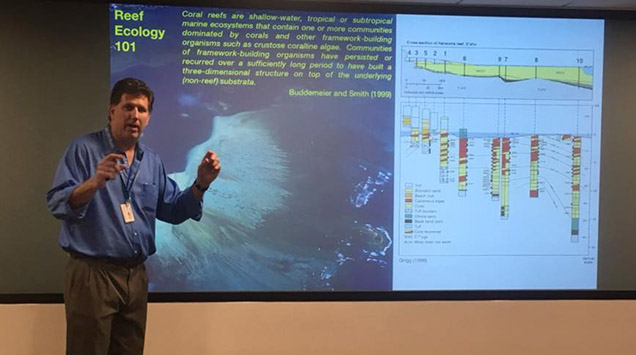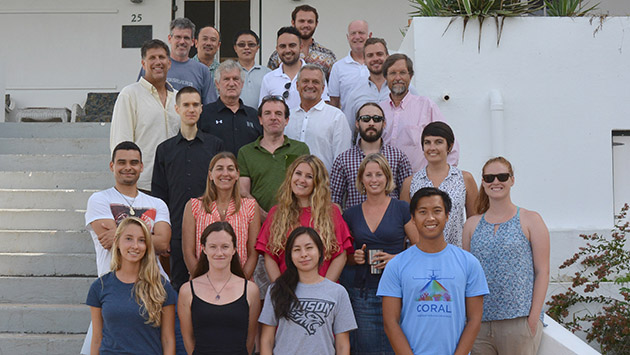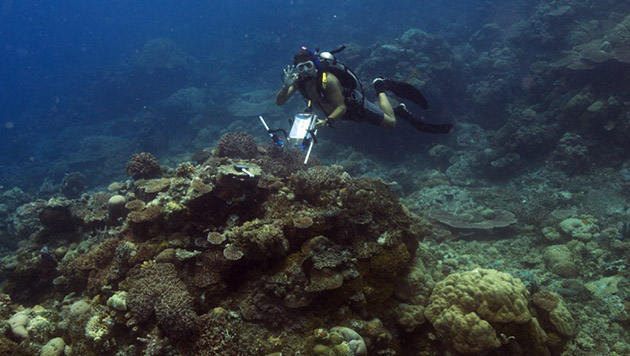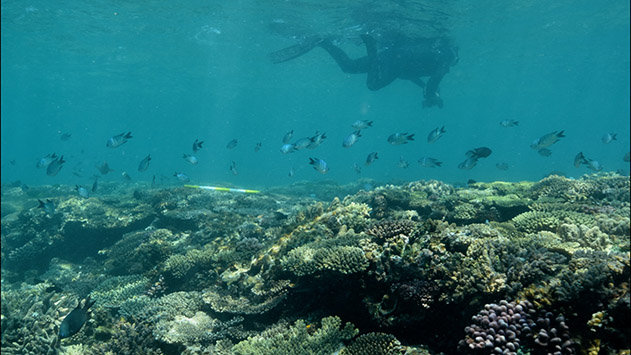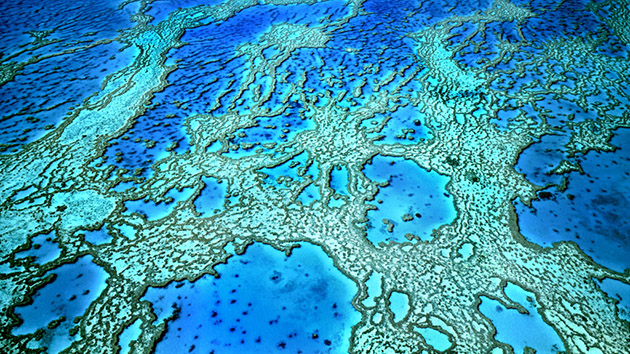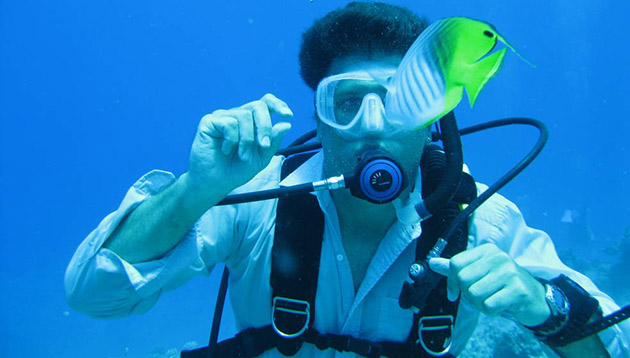Coral Reef Ecology and Optics Laboratory
BIOS Scientist Provides Updates on NASA Project
Project overview given as the CORAL mission enters its final year
Read MoreExploring Dynamics of Reef Function
This year’s Cawthorn Innovation Award granted to three BIOS researchers
Read MoreCORAL Mission Prepares to Enter Third Year
Project personnel attend two-day meeting at BIOS to discuss objectives and approaches
Read MoreThe Magic of the Marianas and Micronesia
For six weeks in April and May, the coral reefs of the Mariana Islands also supported a cadre of scientists deploying instruments and collecting data as part of NASA’s COral Reef Airborne Laboratory (CORAL) mission. Using a state-of-the-art sensor—the Portable Remote Imaging Spectrometer (or PRISM)—housed in a Gulfstream-IV airplane, CORAL will provide a new perspective on the function and future of coral reef ecosystems.
Read MoreWorking Around the Weather
The COral Reef Airborne Laboratory (CORAL) mission just wrapped up its second field campaign—this time in Hawaii—after spending more than a month working around challenging local weather conditions
Read MoreBIOS Scientists Make Room for Flumes
How terrestrial science is being used to understand reef ecosystems
Read MoreNASA Project Takes Scientists to Reefs Around the World
CORAL reports on recent field campaign to the Great Barrier Reef.
Read MoreNASA to Map Coral Reefs from the Air to Show Impact of Climate Change
NASA and top scientists from around the world are launching a three-year campaign this month to gather new data on coral reefs like never before. Read more at TheGuardian.com
Read MoreNASA Steps Up to Track the Shrinking of Earth’s Coral Reefs
The COral Reef Airborne Laboratory, known as CORAL, will use a state-of-the-art spectrometer to map reefs in four locations: Hawaii, Palau, the Mariana Islands, and parts of the Great Barrier Reef. These maps will provide a baseline comparison for future surveys. Climate change and the recent widespread coral bleaching events make such a project only more urgent. Read more at Wired.com
Read MoreA Reef Scientist Talks About NASA’s CORAL Campaign
Eric Hochberg, the principal investigator for NASA’s COral Reef Airborne Laboratory (CORAL) campaign, is a research scientist at BIOS. CORAL will survey more of the world’s coral reefs, and in far greater detail, than ever before to measure the condition of these threatened ecosystems.
Read More
